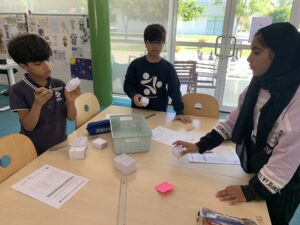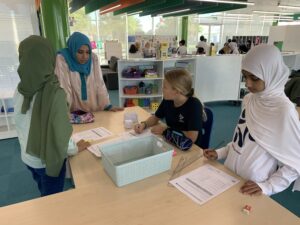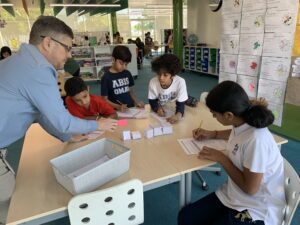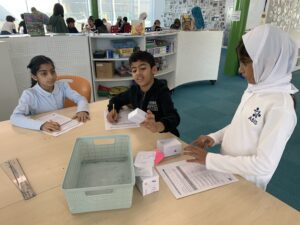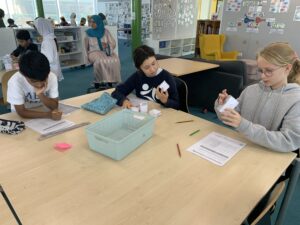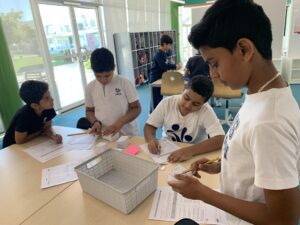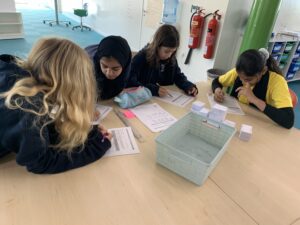Year-to-Date: 508.1; Apr 2023: 19.9; Last Week: 38.0
In the lead up to the mid-module assessment, students worked within small groups to solve a problem together. Teachers provided simple materials, such as templates and stationary. Teachers and students discussed success criterion, which included making, labeling, and combining 5-7 rectangular prisms into a sculpture with less than 1,000 cubic centimeters. Groups of students managed themselves over lessons this week and last to complete their work. As a capstone, groups evaluated other group’s work before posting it onto a wall.
Problem-based learning is part and parcel of learning engagements in PYP schools and this year’s G5 learning community. Far from being two separate entities, they often compliment each other. Problems, resources, guidelines/limitations, and success criteria give students a chance to develop ownership of their learning. Problems are time-based because students choose how to direct their learning individually and collectively. Groups of students publish their learning for evaluation by combining their voice with their evaluator’s voices (through notes.)
As noted in the following photographs, students experienced varying levels of success. Some groups worked on their social skills to appreciate individual voices with others. Some groups worked on research skills to figure out the best method to create a sculpture. Most groups worked on communication skills, particularly how to share ideas. Most groups worked on self-management skills to focus on working within the time given. All groups worked on thinking skills to critically examine how each steps in the process lead–or didn’t lead–to success.

